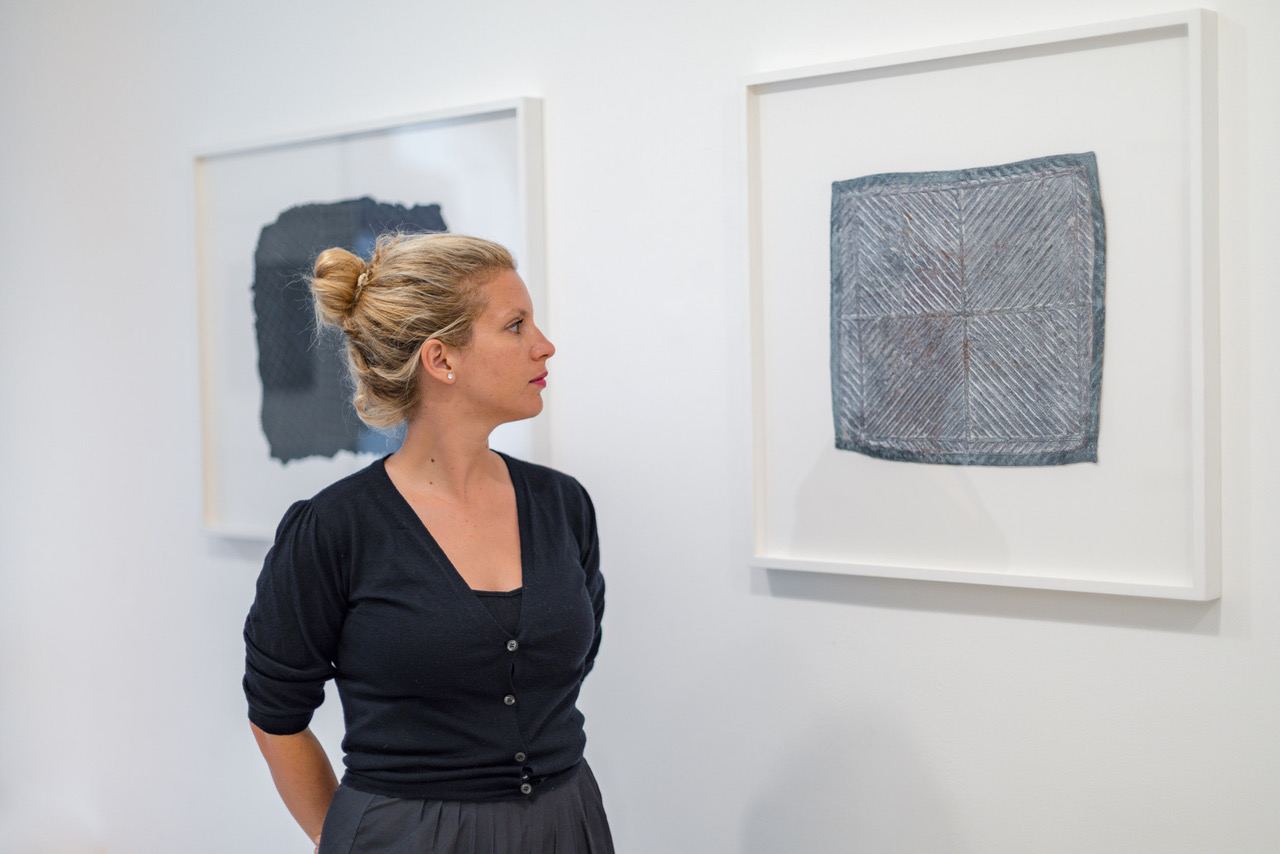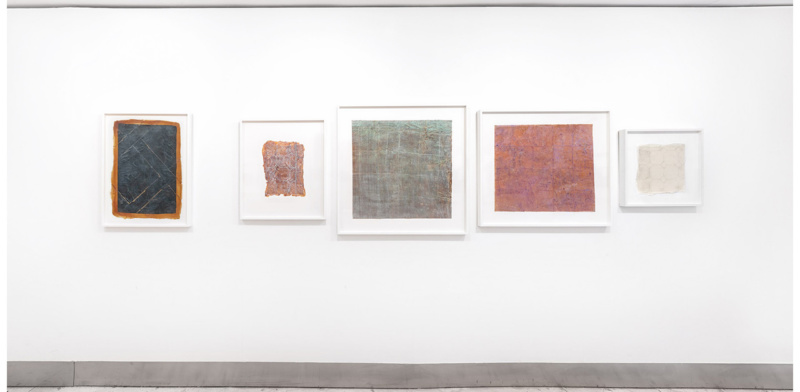
The first time Venetian gallerist Alma Zevi brought Heidi Bucher to his floating Italian city, in 2017, she paired the late Swiss artist’s sculptures with the late Gordon Matta-Clark’s photographs of his cuts and slices into the floors of houses and other abandoned buildings. This posthumous coupling emphasized Bucher’s radicality and her interest in domestic architecture by introducing her “skinnings,” a sculptural series in which the artist captured the physical footprints of personally significant interiors in latex, crushed mother of pearl and the occasional textile.
This fall, Zevi puts Bucher’s skins front and center with “Sublime Geometry,” a show that revisits this seminal body of work but through a minimalist lens. “Materiality and the repetition of ‘the grid and geometric forms are the major elements of the movement, and these are the ideas that Bucher’s skinnings embody,” Zevi says. “But when we think of minimalism we think of Sol LeWitt, Agnes Martin, Donald Judd, Carl Andre—their work is stripped of emotional references and has a coolness and a detachment that Bucher’s directly opposes. Heidi takes the characteristics of minimalism and adds beauty and fragility laced with emotion.”
My own encounter with Bucher’s work at Zevi’s gallery recalls the lepidopterist’s study. Small fragments of tiles and floorboards preserved in fleshly plastic and conserved behind glass, as if they were organic rather than synthetic. I am told that the mother of pearl that dusts the layers of latex originates from Bucher’s fascination with the aesthetics of water, which I understand better as I boat home through the alternatingly murky and shiny canals. I am also told Bucher probably came to Venice in her lifetime, and if she didn’t she would’ve liked it.

For me, the work seems to resonate with every part of Venice, a city whose own architecture is slipping into the lagoon yet precariously preserved for now. Bucher’s floppy negatives of her studio floor and childhood kitchen seem to cling to and romanticize a bygone domesticity while still acknowledging that memory is messy, impossibly fragile and not to be wholeheartedly trusted. Her impressions of floors, like the gondoliers singing explicit sailor songs to American tourists in indecipherable Italian, stick a tongue in the cheek of expectation. Looking at them, I find myself homesick for a place I’ve never been.
After I make my way through them, I’m taken upstairs to leaf through some of her works on paper; petite collages in which she doodled dragonflies, another favorite subject, idle over Bucher’s architectural photographs. “Just as the skinnings are an exploration of space, her collages and photographic pieces are a continuation of this, where deliberate choices to record elements of architecture are investigated,” Zevi says. “The collages in particular have the same process of ‘action’ of Bucher’s skinnings and the process; the cutting and sticking of materials, of adding and subtracting layers, makes for an interesting counterpoint.”



